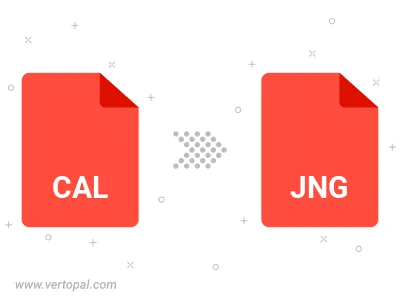Convert CAL to JNG
Convert CAL images to JNG format, edit and optimize images online and free.

The CAL file extension, known as CALS (Continuous Acquisition and Life-cycle Support) Type 1 Image, is a 1-bit black-and-white raster image format developed by the U.S. Department of Defense in the mid-1980s to standardize graphics data interchange for military documentation. It is primarily used for storing and sharing monochrome images while retaining orientation metadata. The format supports both uncompressed and compressed (using CCITT Group 4 compression) images.
The JPEG Network Graphics (JNG) file extension is designed for storing JPEG-encoded image data within the PNG file format. Introduced as part of the MNG (Multiple-image Network Graphics) format, JNG was created to provide a flexible, high-quality image format that supports both lossy and lossless compression. It is particularly useful in applications requiring the integration of JPEG compression within a wider range of data types and multimedia elements. Though not widely adopted, JNG offers enhanced compatibility and versatility for complex imaging tasks in computer graphics and web development.
Click the Choose File button to select the CAL file.
Check the file preview quickly and use CAL to JNG tools if you need to change the conversion settings.
Let the file convert, then you can download your JNG file right afterward.

To change CAL format to JNG, upload your CAL file to proceed to the preview page. Use any available tools if you want to edit and manipulate your CAL file. Click on the convert button and wait for the convert to complete. Download the converted JNG file afterward.
Follow steps below if you have installed Vertopal CLI on your macOS system.
cd to CAL file location or include path to your input file.Follow steps below if you have installed Vertopal CLI on your Windows system.
cd to CAL file location or include path to your input file.Follow steps below if you have installed Vertopal CLI on your Linux system.
cd to CAL file location or include path to your input file.